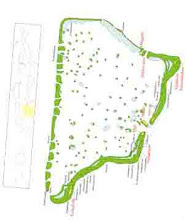
From Chora, the main village of Ios, to Mylopotas, follow the dirt road at the end of the beach, I lead to the south coast of the island. This itinerary do offers the most interesting views of the place. By passing by Mylopotas and turning right at the crossroads, we can reach the splendidly isolated beach of Klima (accessible only on foot). But this was not my final destiny. I enter the main road again, and I get to the Monastery of Kalamos. Kalamos is a very well-preserved 200-year-old Byzantine building, which stills today a special place of worship for the locals. The place is a spiritual refuge, very peaceful and profound, and definitely deserves all the efforts to get there. The island has 365 churches as many as the days of the year, most of them are Byzantine. Everything is painted white, to resist the merciless heat of Greek summer, with blue or green doors and windows in accordance with the deep blue of surrounding Aegean Sea.


















